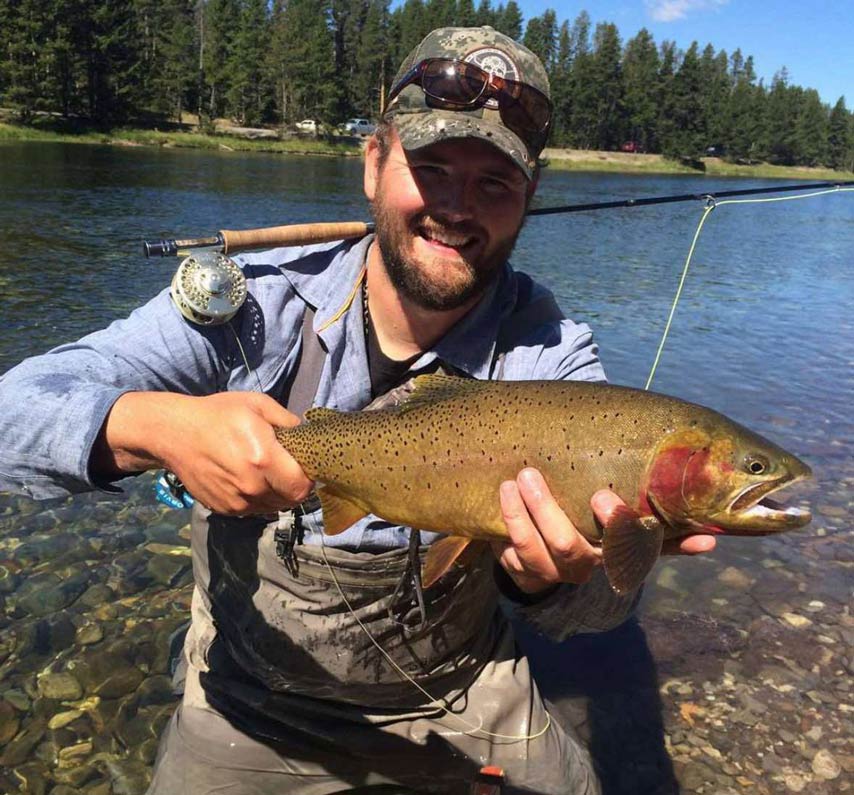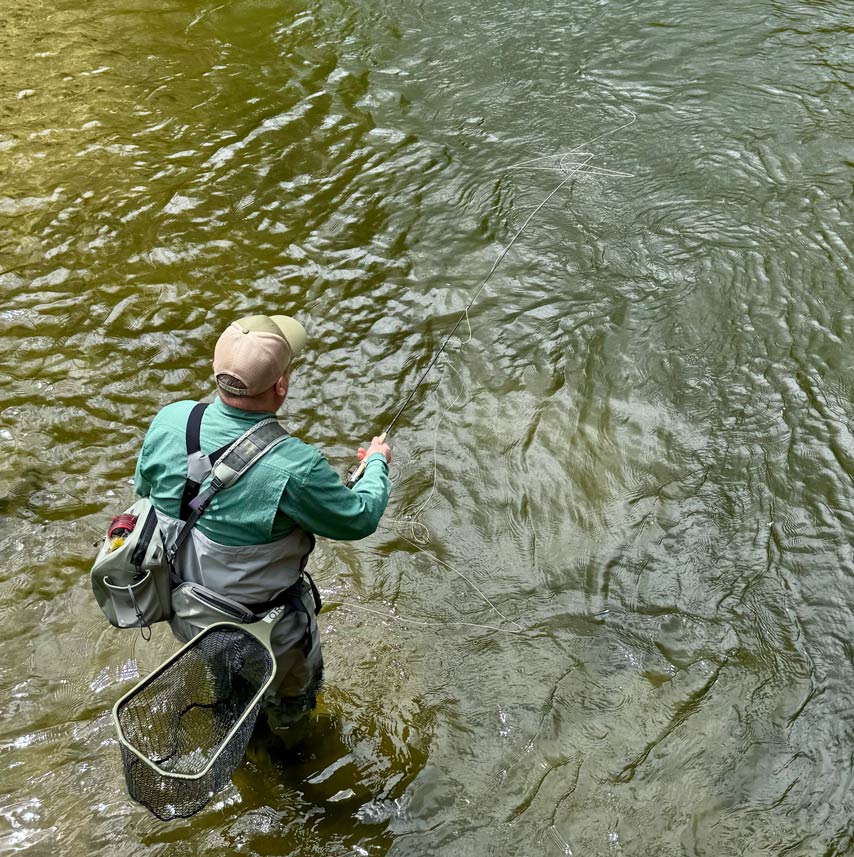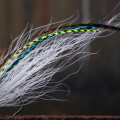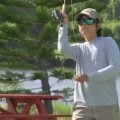3 Ways to Extend Your Dead Drifts

The author shows off a fine Yellowstone cutthroat he hooked after a long dead drift. Photo: Kubie Brown
One of the most crucial skills in fly fishing is the ability to achieve a drag-free drift—especially at a distance. Whether you’ve got a rising trout in front of you or a juicy-looking lie to run your nymphs through, your first drift is always your best shot, and you want it to look as natural as possible. You can try to get as close to the fish or the spot as you can and then just let your drift follow the natural path of the current, but sometimes you need to make adjustments to extend your drift and keep your fly on course.
Extending your drift can feel a bit like walking a tight rope, where one missed step, one errant twitch of your line or flick of your fly may cause it all to fall apart. Many fly anglers try to overcome this by getting closer to their target, but this will often blow the game before it’s begun. The only real solution to this problem is to learn several ways to extend your drift , as well as how and when to use each technique in different situations.
1. The Stack Mend
Stack mending is probably the simplest and most common way to extend a drift. After you cast and mend the line to get your fly drifting in the right direction, pull some extra line off your reel and make either standard mends or mini roll casts upstream of your fly or indicator. Using this method, you can feed line into your drift until the fly reaches your target. It’s a fairly straightforward, yet limited method, but you need to stack-mend quickly enough to stay ahead of the drift without adding any tension and accidentally moving your fly. Mend so the line lies on the surface in as straight a line as possible, and drop each loop at the same point on the water.
Stack-mending is a fantastic method for both dry-fly fishing and nymphing, when you need to cast across the river and upstream of your target. It usually works best when you are fishing a long section of fast moving, deep water or a single line of current traveling at a consistent speed without a lot of underwater rocks or microcurrents to divert or change the direction of the drift. With a bit of practice, you’ll be able to stack-mend quite a bit of line and extend your drift by 20 feet or more, which makes it a fantastic technique for covering water in long pools or for running your flies along the edges of the bank.

By wiggling your rod tip to place slack line on the water, you can extend a downstream drift. Photo: Clare Monahan
2. The Downstream Drift
A downstream drift is another method that requires adding slack to your drift once the fly is already on the water. However, downstream mending is done a little differently, as you have to stand upstream of your intended target and then cast downstream, dropping the fly slightly above the fish before adding slack and extending the drift.
Before you cast, pull the amount of line you’ll need off your reel. Make the cast, and then keeping your rod tip low over the water, flick your rod tip back and forth to shake out slack line without moving your fly. You’ll end up with S-curves of slack line on the water, and your drifting fly will slowly pull the S-curves straight. It can be a tricky but effective process once you get it right.
Downstream drifting is a bit more challenging than stack mending as it gives you far less leeway and the side-to-side flicking of your rod tip can cause your flies to skate or jerk on the surface of the water if you don’t stay ahead of the slack. It’s best done on the slow-moving currents of spring creeks and long, slow-moving pools when you’re using small dry flies and don’t need to make an extremely long drift. Realistically, you can add about 10 feet of line into your drift. Any longer than that, and it becomes too hard to control or too difficult to set the hook when the fish eats the fly.
3. Reach Cast and Pile Cast
The reach cast and pile cast add slack while the fly is still in the air and extend your drift. Both casts can quickly and effectively add a few feet of line to your drift without disturbing the surface of the water. These casts can also be combined with stack mending and downstream drifting to help you really reach out and touch something when you need to. However, it’s important to both understand how to make these casts and when to utilize them.
The reach cast is a cross-current casting method, where you essentially mend upstream while your fly is in mid-air. To do it, pull some extra slack off your reel and then make a forward cast toward your target. Once the fly is on its way, “reach” with your rod by swinging the rod tip upstream (or, less commonly, downstream) and releasing the extra-slack. This cause the line to land lightly upstream of the fly, allowing for an excellent drift as soon as the fly hits the water. You can then add in some stack mends to your drift and be well ahead of your line tension, allowing your fly to dead-drift for quite a distance.
The pile cast is a downstream presentation cast where you direct your fly line upward, rather than outward. You stop the rod tip on the forward stroke and then immediately drop the rod tip, allowing excess line to pile behind your leader. This allows your fly to immediately drift unencumbered so that it will be much less likely to be effected by any changes in the current pushing on the belly of your fly line. Pile casting is a great technique to combine with a downstream drift, as it gives you a few extra feet of line right off the bat to prevent any skating of your fly and can even allow you to reposition yourself in the stream before beginning your drift without having to take your fly off of the water.
Hitting It at Long Range
One of the most beautiful things about fly fishing is that it’s an art that can never be perfected. No matter your skill level or how experienced an angler you are, there’s always another step, another trick, and another challenge for you to overcome in order to become a more complete angler. For most of us, being able to cover more water and present flies from a distance is at the top of the list.
As with casting, fly selection, and mending in general, extending your drift requires a bit of practice to finally get right. Yet when you figure out how to do it properly and how to use it at the right time, it can open you up to a whole new world of fishing. For when you know how to extend your drift, you can cover more water, spook fewer fish, and have the satisfaction of knowing that nothing is ever out of your reach.











